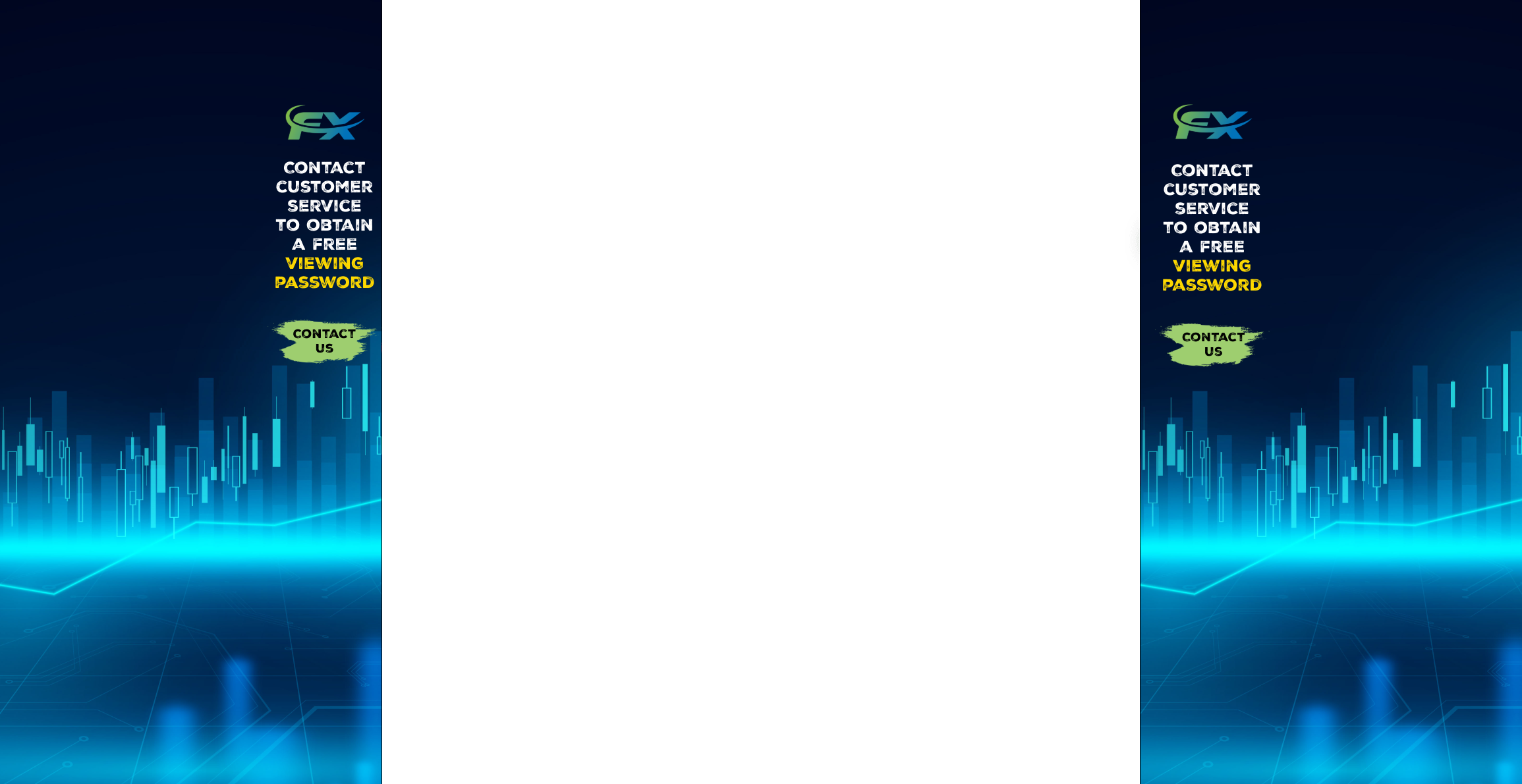Forex trading offers an exciting opportunity to participate in the global financial markets. Learning how to trade for Forex can be a rewarding venture, but it requires a solid understanding of key concepts, strategies, and the tools available. As the market evolves, staying ahead of the latest platforms and technologies is crucial to success. Whether you are new to Forex or looking to sharpen your skills, mastering the fundamentals and exploring the best resources for 2025 will enhance your trading experience and increase your potential for profit.
Forex Trading Basics and Key Concepts
Understanding Forex trading requires grasping several fundamental concepts that shape how trades are executed and analyzed in the market. These core ideas—currency pairs, order types, timeframes, and the importance of analysis—set the stage for creating a strategy that fits your goals.

Understanding Currency Pairs and Their Impact
Major currency pairs like EUR/USD, GBP/USD, and USD/JPY make up the bulk of trading volume. These pairs typically have low spreads and high liquidity, making them ideal for those just starting out.
Minor pairs (such as EUR/GBP) and exotic pairs (like USD/TRY) tend to be more volatile and can come with higher spreads, requiring a more nuanced understanding of the market.
Currency pairs are quoted in two parts: the base currency (e.g., EUR) and the quote currency (e.g., USD). When you buy a currency pair, you're buying the base currency and selling the quote currency.
The relationship between the two currencies can shift based on economic factors, geopolitical events, and market sentiment, influencing how traders apply their strategies.
Example:
For instance, when you trade EUR/USD, you're speculating on the Euro’s performance against the U.S. Dollar. This pair’s movements can be influenced by economic reports like GDP growth, or interest rate changes from the European Central Bank (ECB) or Federal Reserve.
Order Types and Their Role in Execution
Market Orders: Executed at the current market price, these are the simplest and most immediate form of order. Market orders are best for traders who need to enter or exit a position quickly, such as when executing a Scalping strategy.
Limit Orders: These orders are placed to buy or sell at a specific price, ideal for Swing Traders who aim for more precise entry and exit points. These orders are useful when you want to avoid entering a trade at a less-than-ideal price.
Stop Orders: A stop order triggers when a price moves past a specified point, helping minimize losses or protect gains. This type of order is a cornerstone for managing risk in Day Trading.
Stop-Limit Orders: A hybrid order type that combines features of both stop and limit orders. A Stop-Limit order ensures a trader can get a favorable price, but with the added security that the position will only be closed at a certain price level.
Trailing Stops: These automatically adjust to market price fluctuations, helping to lock in profits as the price moves in a favorable direction. Trailing stops are crucial for Trend Following strategies, as they allow you to ride profitable moves while protecting your gains.
Key Trading Timeframes: Which to Choose for Your Strategy
Short-term (M1, M5, M15): These timeframes are perfect for rapid, intra-day trades. Scalpers typically use M1 or M5 charts to capitalize on very small price movements. Since these timeframes reflect minute-to-minute fluctuations, traders need to be nimble and make quick decisions.
Medium-term (H1, H4): For Swing Traders, timeframes like H1 and H4 provide a good balance between capturing larger price moves and reducing market noise. These timeframes allow traders to focus on trends without the constant fluctuations of minute-based charts.
Long-term (Daily, Weekly): Position Traders or those with a longer-term view might opt for daily or weekly timeframes. These charts reveal broader market trends, making them ideal for traders looking to ride out longer-term price movements driven by major economic events.
The Importance of Fundamental and Technical Analysis
Fundamental Analysis
Economic Indicators: Forex prices often reflect broader economic conditions. Key indicators such as interest rates, unemployment rates, and inflation data influence market sentiment and currency valuations.
Central Bank Policies: Announcements from central banks, like the Federal Reserve or the European Central Bank, can create significant price movements as traders react to expected changes in monetary policy.
Geopolitical Events: Political instability, trade wars, or international agreements can also cause currency pairs to fluctuate dramatically. Understanding the impact of geopolitical factors is essential for longer-term traders.
Technical Analysis
Technical Indicators such as the Relative Strength Index (RSI), Moving Average Convergence Divergence (MACD), and Bollinger Bands are key tools for identifying overbought or oversold conditions, trend directions, and potential reversal points.
Combining these indicators with price action analysis helps refine entry and exit points, especially for trend-following strategies.
The synergy between Fundamental and Technical analysis creates a robust trading strategy. While fundamentals explain why markets move, technical analysis helps you time your trades and pinpoint optimal entry and exit points.
Exploring Trading Platforms for 2025
Selecting the right trading platform is critical for success in Forex. The tools and features offered by trading platforms like MetaTrader 4, MetaTrader 5, and cTrader shape how effectively traders can implement their strategies in 2025. Each platform comes with unique strengths, designed to cater to traders’ specific needs and preferences.
MetaTrader 4 vs MetaTrader 5: Choosing the Best Platform
MetaTrader 4 (MT4): Widely known for its simplicity and stability, MT4 remains a go-to for many Day Traders and Swing Traders. The platform supports custom indicators and Expert Advisors (EAs), offering automated trading solutions.
MetaTrader 5 (MT5): Although similar to MT4, MT5 introduces significant upgrades such as more timeframes, improved charting tools, and the ability to trade stocks and commodities in addition to Forex. This platform is ideal for traders looking for more advanced features.
Key Differences: MT5 provides faster execution speeds and supports a broader range of order types, including market depth. However, MT4 is better for traders who prefer a more streamlined, no-frills interface.
Which One to Choose: For Scalpers or those focused exclusively on Forex, MT4 might be the better choice. On the other hand, MT5 appeals to Position Traders or those wishing to explore other financial instruments.
MT4 vs MT5
| Feature | MetaTrader 4 (MT4) | MetaTrader 5 (MT5) |
|---|---|---|
| Supported Markets | Forex | Forex, Stocks, Commodities |
| Charting Tools | Basic | Advanced |
| Order Types | Basic | Expanded |
| Timeframes | 9 | 21 |
| Expert Advisors (EAs) | Yes | Yes |
cTrader: A Rising Star in Forex Trading
User-Friendly Interface: cTrader is known for its sleek interface, making it a great choice for traders new to the market. It offers highly customizable charting features and is optimized for Scalping.
High-Speed Execution: One of the standout features of cTrader is its ability to execute orders quickly. This is essential for Day Traders looking to capitalize on short-term price movements.
Advanced Order Types: Unlike some platforms, cTrader supports advanced order types like One-Cancels-the-Other (OCO), which can be useful for traders looking to manage risk and execute complex strategies.
Mobile Compatibility: cTrader provides a seamless experience across mobile devices, making it easy for traders to monitor positions and execute trades on the go.
TradingView: A Tool for Both Beginners and Professionals
Charting Capabilities: TradingView stands out for its advanced charting tools, which include a wide range of technical indicators like Moving Averages, MACD, and Bollinger Bands. These tools help Swing Traders analyze market trends and identify entry and exit points.
Social Features: One of the unique features of TradingView is its social aspect. Traders can share ideas, charts, and strategies, creating a community for both Beginner Traders and seasoned professionals to learn from each other.
Cross-Platform Accessibility: TradingView works seamlessly on both desktop and mobile devices, providing flexibility to traders. It integrates with other platforms like MetaTrader for more advanced execution features.
The Role of Automated Trading Systems in Forex
What is Automated Trading?: Automated trading, or algorithmic trading, uses pre-set rules to execute trades automatically. This eliminates human error and emotion, which can be critical in volatile markets.
Integration with Platforms: Platforms like MetaTrader 4 and cTrader allow traders to integrate automated systems. These systems can use Technical Indicators like RSI or Fibonacci Retracement to make decisions based on real-time data.
Benefits for Traders: Automated trading allows for faster execution, consistent performance, and the ability to backtest strategies without needing to monitor markets constantly.
Considerations: While automated systems can enhance trading efficiency, they also require a solid understanding of risk management and strategy design to prevent large losses.
Mobile Trading Platforms: The Future of On-the-Go Forex Trading
Mobile Trading Growth: In 2025, mobile platforms are becoming a vital tool for traders. With apps like MetaTrader 4, cTrader, and TradingView available on mobile, traders can access their accounts anytime, anywhere.
User Experience: Mobile platforms offer features that allow traders to execute orders quickly, view live charts, and access real-time news—essential for Scalping and other time-sensitive trading strategies.
Integration with Desktop Platforms: Most mobile trading apps now seamlessly sync with desktop versions, so traders can start a position on their desktop and monitor or close it from their mobile device.

Trading Strategies to Succeed in Forex
Successful Forex trading requires a clear strategy. Whether you're focused on short-term Scalping or long-term Trend Following, understanding each strategy’s strengths is key.
Scalping: Mastering Quick Entries and Exits
Definition: Scalping is a high-frequency trading strategy aimed at capitalizing on small price movements. It involves quick entries and exits, typically within minutes or seconds.
Key Indicators: Use of Stochastic Oscillator, Moving Averages, and Bollinger Bands to identify short-term entry points.
Timeframes: M1 and M5 charts are most commonly used.
Risk Management: Given the rapid pace, Stop-Loss and Take Profit orders must be tightly set to avoid large losses.
Platforms to Use: Platforms like MetaTrader 4 or cTrader are great for scalpers due to their fast execution speeds.
Day Trading: Capitalizing on Daily Market Movements
Day trading involves entering and exiting positions within the same day, and it’s a strategy focused on capitalizing on intraday market fluctuations.
Key Focus: Traders analyze short-term price action using Technical Indicators like the Relative Strength Index (RSI) and MACD.
Timeframes: M15, M30, and H1 are ideal for analyzing intraday moves.
Advantages: Unlike swing traders, day traders close positions before the market closes to avoid overnight risk.
Common Pairs Traded: Pairs like EUR/USD, GBP/USD, and USD/JPY are popular for day trading due to their liquidity.
Swing Trading: Navigating Medium-Term Price Fluctuations
Swing trading focuses on capturing price swings over several days or weeks. Traders aim to profit from short- to medium-term price movements.
Key Strategy: Identify strong Support and Resistance levels using tools like Fibonacci Retracement or Pivot Points.
Timeframes: Primarily H4, Daily, and sometimes Weekly for broader market views.
Risk Management: Position Sizing and placing Stop Losses beyond key support/resistance levels can protect profits.
Best Pairs for Swing Trading: AUD/USD, NZD/USD, and EUR/GBP due to their frequent price movements.
Trend Following: Riding the Waves of the Market
Trend-following strategies focus on identifying and riding established market trends, aiming to capture profits over the long term.
Key Focus: Moving Averages, ADX, and Trendlines help identify strong trends.
Timeframes: H1, H4, and Daily timeframes are used for trend confirmation.
Advantages: Traders benefit from large market movements in the direction of the trend, and profits can accumulate over weeks or months.
Risk Management: Use of trailing stops to lock in profits as the trend continues.
News Trading: Leveraging Economic Events for Profit
News trading involves making decisions based on major economic data releases, like Central Bank Announcements, GDP Reports, or Inflation Data.
Economic Calendar: Understanding the timing and potential impact of news events, such as interest rate decisions or unemployment rates, is crucial.
Key Pairs for News Trading: EUR/USD, USD/JPY, and GBP/USD often see significant volatility during news releases.
Strategy: Traders use real-time news feeds and quick market orders to enter positions immediately after significant news events.
Mean Reversion: Betting on Market Corrections
Mean reversion is based on the belief that prices will return to their historical averages after deviating too far.
Key Concept: When prices diverge significantly from their historical averages (measured by Moving Averages or Bollinger Bands), they are expected to revert to the mean.
Timeframes: M5, M15, and H1 charts are typically used for mean reversion trades.
Risk Management: This strategy requires strong risk management as markets can remain overbought or oversold for extended periods.
Suitable Pairs: EUR/USD and GBP/USD are commonly used due to their liquidity and tendency to experience periodic corrections.
Comparison of Trading Strategies
| Strategy | Timeframe | Key Indicators | Risk Management | Ideal Pairs |
|---|---|---|---|---|
| Scalping | M1, M5 | Stochastic Oscillator, Moving Averages | Tight Stop-Loss, Take Profit | EUR/USD, USD/JPY |
| Day Trading | M15, M30, H1 | RSI, MACD | Position Sizing, Intraday Stops | EUR/USD, GBP/USD |
| Swing Trading | H4, Daily | Support/Resistance, Fibonacci Retracement | Stop Loss beyond key levels | AUD/USD, NZD/USD |
| Trend Following | H1, H4, Daily | Moving Averages, ADX | Trailing Stop | EUR/USD, GBP/USD |
| News Trading | Real-time | Economic Calendar, News Feeds | Quick Market Orders | EUR/USD, GBP/USD |
| Mean Reversion | M5, M15, H1 | Moving Averages, Bollinger Bands | Strong Risk Management | EUR/USD, GBP/USD |
Risk Management in Forex Trading
Effective risk management is crucial for long-term success in Forex trading.
Stop Loss and Take Profit: Essential Tools for Managing Risk
Stop Loss: A stop loss is an order placed to automatically close a trade at a predetermined price level to limit losses. It’s one of the most crucial risk management tools for traders.
Example: If you’re trading EUR/USD and the price reaches 1.1000, you can set a stop loss at 1.0950 to limit a 50-pip loss.
Timeframes: H1 and M15 often require dynamic stop loss adjustments to match the volatility.
Take Profit: The take profit order is set to automatically close a trade when it reaches a desired profit level.
Example: For GBP/USD, if you’re aiming for a 100-pip profit, you set the take profit at 1.3100.
Timeframes: Commonly used in Day Trading and Swing Trading, but can be adjusted for longer positions.

Position Sizing: How Much to Trade for Optimal Risk
Position sizing is the process of determining the amount of currency to trade based on risk tolerance and trading goals. This crucial step ensures that you do not risk more than you can afford.
Risk Calculation: First, decide how much of your total capital you are willing to risk on each trade (e.g., 1% of your account balance).
Lot Size Determination: Based on your risk per trade, calculate the appropriate lot size. For example, if your account balance is $10,000, and you are willing to risk 1% per trade ($100), you would need to calculate how many pips you can afford to lose based on your stop loss.
Leverage Considerations: The use of leverage can impact your position size. A higher leverage increases the potential for both profits and losses.
Best Practice: Many traders aim to risk no more than 1-2% of their capital on a single trade to ensure they survive long-term market fluctuations.
Risk-Reward Ratio: A Formula for Consistent Profitability
The Risk-Reward Ratio (RRR) is a key concept in Forex trading, helping traders balance the potential risk against the potential reward of each trade.
Formula: The formula for calculating the risk-reward ratio is:
Example: If your stop loss is set at 50 pips and your take profit is set at 100 pips, the Risk-Reward Ratio is 1:2. This means for every $1 of risk, you aim to make $2 in profit.
Why It’s Important: A favorable Risk-Reward Ratio ensures that even if you win only 50% of the time, you can still be profitable. Traders typically aim for a Risk-Reward Ratio of at least 1:2 for consistent profitability.
Money Management and Diversification in Forex Trading
Effective money management and diversification are critical for protecting capital while maximizing returns. These strategies reduce the likelihood of significant losses that could wipe out trading accounts.
Money Management: This includes setting aside only a portion of your capital for trading, ensuring you don’t risk everything on one or two trades.
Strategy: Use Position Sizing and maintain a diversified portfolio. For example, allocate different amounts to various currency pairs like EUR/USD, GBP/USD, and USD/JPY, reducing the risk exposure in any single market.
Diversification: Avoid putting all your funds into one trade. Diversify across different currency pairs, sectors, or even asset classes. This helps reduce risk and increases the chance of profitability in varied market conditions.
Best Practice: Diversification reduces exposure to any single risk factor and is particularly effective during high volatility periods. Also, consider adjusting leverage to avoid overexposure to market fluctuations.
Risk Management Comparison
| Risk Management Tool | Description | Key Benefits | Best Use Case |
|---|---|---|---|
| Stop Loss | Automatically closes a position at a predefined loss level | Limits potential losses, prevents emotional decision-making | Essential for all trading strategies |
| Take Profit | Automatically closes a position when a set profit level is achieved | Locks in profits, removes guesswork | Used in Day Trading and Swing Trading |
| Position Sizing | Determines the amount to trade based on risk tolerance | Helps avoid overexposure, reduces risk | Crucial for Scalping and Swing Trading |
| Risk-Reward Ratio | Calculates potential risk vs. reward to assess profitability | Aims for consistent profitability in the long run | Used for Trend Following and Day Trading |
| Diversification | Spreads capital across different currency pairs | Reduces exposure to market-specific risks | Ideal for Swing Trading and Position Trading |
Understanding Forex Market Fundamentals
To successfully navigate the Forex market, traders need to understand the fundamental factors that drive currency prices.
Economic Indicators and Their Influence on Currency Movements
Economic indicators are reports that provide insight into a country’s economic health. Key indicators directly impact currency movements and trading decisions.
Inflation Data: High inflation can devalue a country's currency as it erodes purchasing power.
Example: If US inflation rises, the USD may weaken against other currencies like the EUR/USD.
GDP Growth: Strong GDP growth signals a growing economy, often leading to currency appreciation.
Example: Positive GDP data from the UK can push GBP/USD upwards.
Unemployment Rate: Lower unemployment often signals economic stability, boosting confidence in a country's currency.
Example: A drop in the EUR/GBP exchange rate could follow a rise in Eurozone employment.
Interest Rates: Central banks’ interest rate decisions impact currency valuations by changing the returns on investments in that currency.

The Role of Central Banks and Interest Rates
Central banks hold significant influence over Forex markets by controlling interest rates and monetary policy. These policies affect inflation, investment flows, and ultimately currency valuations.
Interest Rate Hikes: Central banks raise interest rates to curb inflation. Higher rates attract foreign capital, causing a currency appreciation.
Example: When the Federal Reserve raises rates, the USD tends to strengthen against other currencies like EUR/USD or GBP/USD.
Interest Rate Cuts: When central banks lower rates, they make borrowing cheaper, which can lead to currency depreciation.
Example: Bank of Japan frequently cuts rates, which keeps the JPY relatively weaker compared to other major currencies.
Traders' Strategy: Traders often anticipate central bank actions by monitoring economic calendars for scheduled announcements, such as Federal Reserve meetings, and adjust their trading strategies accordingly.
Geopolitical Events and Their Impact on Forex Trading
Geopolitical events can create market volatility and significantly affect currency values. Wars, trade negotiations, and political instability often result in swift shifts in currency prices.
Political Instability: Instability can cause uncertainty, which typically weakens a country's currency.
Example: The Brexit vote in 2016 led to a sharp depreciation of the GBP/USD as investors feared economic consequences.
Trade Wars: The imposition of tariffs or trade sanctions between nations can impact supply chains and currency valuations.
Example: The US-China trade war created uncertainty, affecting the USD/CNY pair.
Natural Disasters or Pandemics: Events like earthquakes or the COVID-19 pandemic can disrupt economic activity, leading to shifts in currency demand.
Traders' Strategy: Monitoring news events, geopolitical shifts, and global crises helps traders predict potential market reactions and plan trades accordingly. Using news trading strategies is essential in these times.
Key Economic Indicators and Their Impact on Forex
| Economic Indicator | Impact on Currency Pair | Example and Effect |
|---|---|---|
| Inflation Data | Weakens currency with higher inflation | EUR/USD may drop when US inflation rises unexpectedly |
| GDP Growth | Strengthens currency with growth | Positive UK GDP data leads to GBP/USD appreciation |
| Unemployment Rate | Currency strengthens with lower rates | A drop in EU unemployment may strengthen EUR/USD |
| Interest Rates | Higher rates increase currency value | A rate hike by the Federal Reserve strengthens the USD |
Conclusion
Mastering how to trade for Forex requires more than just basic knowledge—it demands a thorough understanding of the various platforms, strategies, and tools available. With new technologies and trading platforms emerging in 2025, staying updated with the right resources is crucial for anyone looking to succeed in this fast-paced market. By integrating strategies such as scalping, swing trading, and trend following with solid risk management practices, traders can enhance their chances of achieving consistent profitability. Whether you focus on technical indicators like RSI and MACD, or rely on fundamental analysis involving interest rates and GDP growth, each element plays a vital role in making informed decisions. With the right approach, trading in Forex can be both rewarding and sustainable.
The best platform depends on your trading style, but MetaTrader 5 and cTrader are often favored for their comprehensive tools and ease of use.
MetaTrader 5: Known for its advanced charting and technical analysis tools.
cTrader: Gaining popularity for its fast order execution and customizability.
Scalping involves making numerous small trades to capture minimal price changes within a short timeframe.
It requires high precision and fast decision-making.
Typically, scalpers use M1, M5, or M15 timeframes to maximize profits from small market fluctuations.
Several technical indicators can enhance trading strategies. Some popular ones include:
RSI (Relative Strength Index): Helps determine overbought or oversold conditions.
MACD (Moving Average Convergence Divergence): Useful for identifying trend changes and momentum.
Moving Average: A simple but effective trend-following tool.
Trend following is a strategy that involves identifying the direction of the market (up, down, or sideways) and making trades in the same direction. It helps traders capitalize on long-term trends for profit.
The risk-reward ratio is calculated by comparing the potential risk of a trade to its potential reward. For example, if you're risking 50 pips to gain 150 pips, your risk-reward ratio would be 1:3.
It is essential to maintain a positive risk-reward ratio for long-term success.
Fundamental analysis looks at economic indicators such as interest rates, GDP growth, and inflation data to predict currency movements.
For example, if a country raises its interest rates, its currency may strengthen due to increased investment.
Understanding currency pairs like EUR/USD or GBP/USD is crucial, as each pair represents the relative value between two currencies. Traders use this knowledge to predict which currency will outperform the other.
Stop loss orders automatically close your trade if the market moves against you by a certain amount, limiting your loss.
Take profit orders close your trade once a specified profit level is reached, helping secure gains.
Both tools help reduce emotional decision-making and protect your capital.







